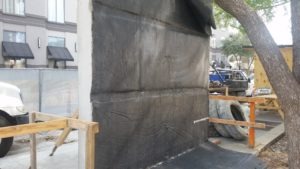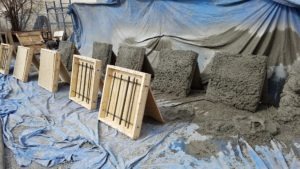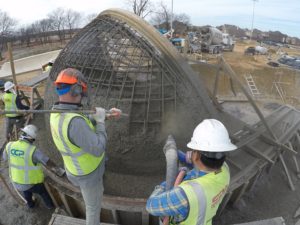Introduction & Team Expectations
A properly designed concrete mix design for shotcrete has higher compressive strength, lower permeability and improved durability when compared to conventional form-and-pour concrete mixes. Whether you are an engineer specifying shotcrete or a contractor who will be inspecting work in the field, here’s a quick introduction to modern day shotcrete mix design.
A qualified and approved shotcrete contractor should first communicate with the engineer and ready mix QC to develop a concrete material that meets or exceeds project goals. Performance based specifications (PBS) are becoming the preferred method for setting mix design expectations and goals. Conventionally, prescriptive specifications simply told a contractor what to provide, while not taking into account operational characteristics such as pumpability and workability. Let the way your shotcrete contractor initiates this process give you a glimpse of their capabilities and expertise. A shotcrete contractor’s submittal of a vendor’s “basic shotcrete mix” is nine-times-out-of-ten not the service any project team deserves.
A Few Shotcrete Mix Design Considerations
The basics of any concrete are water, cement, and aggregate. The fourth component important to a shotcrete mix design are the utilization of concrete admixtures. Concrete designed for shotcrete has a much lower water-to-cementitious material (W/CM) ratio than a conventional form-and-pour mix design. The water W/CM of shotcrete material is typically in the range of 0.35 – 0.45. A water reducing (WR) agent commonly accompanies a shotcrete mix design. The benefits of this inclusion are two-fold. The reduction of water within the mixture inherently allows for a lower W/CM as just described. Secondly, a WR agent increases a shotcrete contractor’s ability to pump material through hoses and pipes. Entrained air protects the life of concrete by increasing hardened, in-place durability due to freeze/thaw cycles. And again, entrained air assists the contractor’s ability to pump material more easily through the system. A third admixture often used during shotcrete operations is hydration control. A set retarder may be utilized during the warmer months or for long transit times, and a concrete accelerator can be incorporated during colder temperatures.
Contact CCP
Contact CCP for any questions you have regarding concrete mix design intended for shotcrete projects. We look forward to hearing from you.



